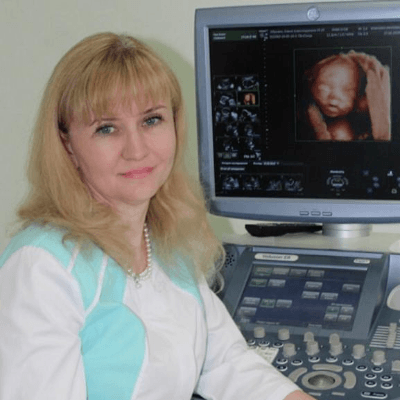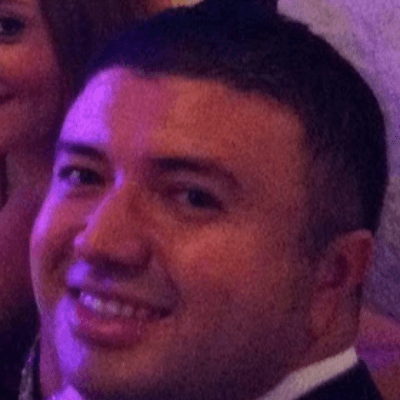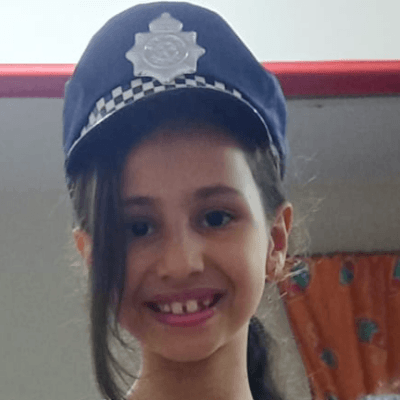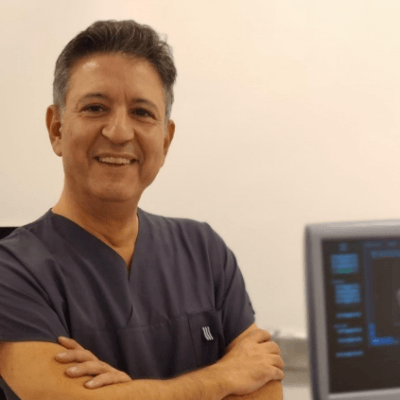Embryology: During embryonic development ectodermal thickenings called the nasal placodes begin to form at the end of the fourth week. These deepen due to active growth of the placode epithelium and proliferation of mesenchyme, forming the nasal groove. The edges of the placode form the lateral then medial nasal process in the early fifth week. As the medial and lateral nasal processes grow, the nasal groove deepens and ultimately becomes the nasal sacs by late fifth week. Over the next few weeks, the medial and lateral nasal processes fuse with the maxillary processes to create the nasal tip, columella, and nasal alae, as well as portions of the upper lip and primary palate [17].
Differential diagnosis: The differential diagnosis for congenital arrhinia is limited. Patients with holoprosencephaly can present without a nose, though these patients have associated brain anomalies. We also considered Oral-Facial-Digital syndrome which can present with anomalies of the oral cavity (Cleft lip and palate, clefts of the jaw and tongue in the area of the lateral incisors and canines, lobulated tongue with hamartomas), face (aplasia of the alar cartilages, hypertelorism, microphthalmia, coloboma, micrognathia), and extremities (syndactyly, clinodactyly, brachydactyly and occasionally postaxial polydactyly). Additionally, there can be defects in the development of the central nervous system (Mental retardation, agenesis of the corpus callosum, seizures), alopecia, polycystic kidney disease and growth retardation [18]. Our case did not have the cleft lip/palate or tongue, significant brain anomalies, and growth retardation that is more commonly seen with Oral-Facial-Digital syndrome. Additionally, the genital findings in our case are less common in Oral-Facial-Digital syndrome.
Clinical consequences: Infants with Bosma Arrhinia Microphthalmia syndrome often have normal intellect and can grow up to study and be employed [12]. However, in the neonatal period, they can suffer from respiratory distress requiring tracheostomy. Some are even provided tube feedings via a gastrostomy in order to lower the risk of aspiration while feeding [11]. During puberty, these patients often require hormone therapy to develop normally and can suffer from reduced bone density, with a propensity for fractures [12, 14].
Etiology: The etiology of Bosma Arrhinia Microphthalmia syndrome is still under investigation. While a genetic cause is thought to play a role, the karyotype in these patients is usually normal with a few exceptions [19, 20]. There have been several familial cases reported including two sets of siblings born with arrhinia and microphthalmia [9, 21], and an aunt and niece presenting with variable manifestations of arrhinia, choanal atresia, microphthalmia, and hypertelorism [5]. Initially, Pax6 gene was investigated as the etiology of BAM syndrome as mice with homozygous mutations of this gene fail to form nasal placodes and have defective ocular and nasal development [22]. However, the Bosma phenotype was not found to correlate with PAX6 mutations in humans [11, 23]. In 2017, Shaw et al developed an international consortium of 40 patients with arrhinia, 84% of which met BAM criteria and found that mutations in SMCHD1 were associated with isolated arrhinia and BAM (15). These findings were further investigated by Gordon et al who found that BAM was associated with missense mutations mapping to the extended ATPase domain of SMCHD1 [24]. This gene has also been associated with facioscapulohumeral muscular dystrophy (FSHD), a myopathy characterized by progressive and often asymmetric weakness and atrophy of the facial and upper extremity muscles [25]. Mul et al investigated whether these different phenotypes were part of a spectrum and found that none of the patients with FSHD2 demonstrated features found in BAM syndrome, concluding that these conditions are likely caused by complex oligogenic or multifactorial mechanisms that only partially overlap at the level of SMCHD1 [26].
References
[1] Bosma JF, Henkin RI, Christiansen RL, et al. Hypoplasia of the nose and eyes, hyposmia, hypogeusia, and hypogonadotrophic hypogonadism in two males. J Craniofac Genet Dev Biol. 1981;1(2):153-84.
[2] Gifford GH, Swanson L, MacCollum DW. Congenital absence of the nose and anterior nasopharynx. Report of two cases. Plast Reconstr Surg. 1972 Jul;50(1):5-12.
[3] Cusick W, Sullivan CA, Rojas B, et al. Prenatal diagnosis of total arhinia. Ultrasound Obstet Gynecol. 2000 Mar;15(3):259-61.
[4] Sakai Y, Ohara Y, Inoue Y. Congenital complete absence of the nose. J Jpn Plast Reconstr Surg. 1989;9:265–273.
[5] Thiele H, Musil A, Nagel F, et al. Familial arhinia, choanal atresia, and microphthalmia. Am J Med Genet. 1996 May 3;63(1):310-3.
[6] Olsen E, Gjelland K, Reigstad H, et al. Congenital absence of the nose: a case report and literature review. Pediatr Radiol. 2001 Apr;31(4):225-32.
[7] Graham JM Jr, Lee J. Bosma arhinia microphthalmia syndrome. Am J Med Genet A. 2006 Jan 15;140(2):189-93.
[8] Sato D, Shimokawa O, Harada N, et al. Congenital arhinia: molecular-genetic analysis of five patients. Am J Med Genet A. 2007 Mar 15;143A(6):546-52.
[9] Cesaretti C, Gentilin B, Bianchi V, et al. Occurrence of complete arhinia in two siblings with a clinical picture of Treacher Collins syndrome negative for TCOF1, POLR1D and POLR1C mutations. Clin Dysmorphol. 2011 Oct;20(4):229-31.
[10] Zhang MM, Hu YH, He W, et al. Congenital arhinia: A rare case. Am J Case Rep. 2014 Mar 18;15:115-8.
[11] Becerra-Solano LE, Chacón L, Morales-Mata D, et al. Bosma arrhinia microphthalmia syndrome in a Mexican patient with a molecular analysis of PAX6. Clin Dysmorphol. 2016 Jan;25(1):12-5.
[12] Brasseur B, Martin CM, Cayci Z, et al. Bosma arhinia microphthalmia syndrome: Clinical report and review of the literature. Am J Med Genet A. 2016 May;170A(5):1302-7.
[13] Ng RL, Rajapathy K, Ishak Z. Congenital arhinia - First published case in Malaysia. Med J Malaysia. 2017 Oct;72(5):308-310.
[14] Hunter JD, Davis MA, Law JR. Hypogonadotropic hypogonadism in a female patient with congenital arhinia. J Pediatr Endocrinol Metab. 2017 Jan 1;30(1):101-104.
[15] Shaw ND, Brand H, Kupchinsky ZA, et al. SMCHD1 mutations associated with a rare muscular dystrophy can also cause isolated arhinia and Bosma arhinia microphthalmia syndrome. Nat Genet. 2017 Feb;49(2):238-248.
[16] Stromiedel H, Van Quekelberghe C, Yigit G et al. A Newborn Suffering from Arhinia: Neonatologic Challenges During Primary Care of the Newborn With Bosma Arhinia Microphthalmia Syndrome (BAMS). Laryngorhinootologie. 2021 Apr;100(4):294-296.
[17] Som PM, Naidich TP. Illustrated review of the embryology and development of the facial region, part 1: Early face and lateral nasal cavities. AJNR Am J Neuroradiol. 2013 Dec;34(12):2233-40.
[18] O'Neill M. “# 311200 Orofaciodigital Syndrome I; OFD1.” OMIM. https://www.omim.org/entry/311200. Publish Date 04/2018.
[19] Kaminker CP, Daín L, Lamas MA, et al. Mosaic trisomy 9 syndrome with unusual phenotype. Am J Med Genet. 1985 Oct;22(2):237-41.
[20] Cohen D, Goitein K. Arhinia. Rhinology. 1986 Dec;24(4):287-92.
[21] Ruprecht KW, Majewski F. Familiary arhinia combined with peters' anomaly and maxilliar deformities, a new malformation syndrome. Klin Monbl Augenheilkd. 1978 May;172(5):708-15.
[22] Grindley JC, Davidson DR, Hill RE. The role of Pax-6 in eye and nasal development. Development. 1995 May;121(5):1433-42.
[23] Tzoulaki I, White IM, Hanson IM. PAX6 mutations: genotype-phenotype correlations. BMC Genet. 2005 May 26;6:27.
[24] Gordon CT, Xue S, Yigit G, et al. De novo mutations in SMCHD1 cause Bosma arhinia microphthalmia syndrome and abrogate nasal development. Nat Genet. 2017 Feb;49(2):249-255.
[25] Lemmers RJLF, van der Stoep N, van der Vliet PJ, et al. SMCHD1 mutation spectrum for facioscapulohumeral muscular dystrophy type 2 (FSHD2) and Bosma arhinia microphthalmia syndrome (BAMS) reveals disease-specific localisation of variants in the ATPase domain. J Med Genet. 2019 Oct;56(10):693-700.
[26] Mul K, Lemmers RJLF, Kriek M, et al. FSHD type 2 and Bosma arhinia microphthalmia syndrome: Two faces of the same mutation. Neurology. 2018 Aug 7;91(6):e562-e570.








